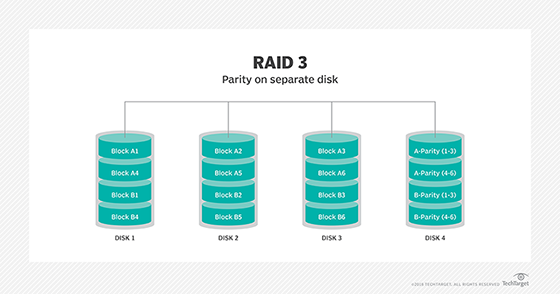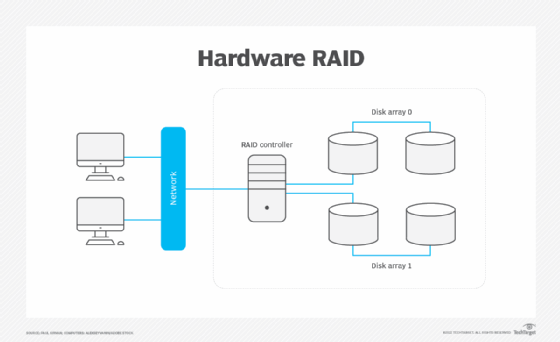What is RAID 3 (redundant array of independent disks 3)? RAID 3 (redundant array of independent disks 3) is a RAID configuration that uses a parity disk to store the information generated by a RAID controller and uses striping for storing the data. Because the parity information is on a separate disk, RAID 3 does not perform well when tasked with numerous […]
What is RAID 50 (RAID 5+0)? RAID 50, also known as RAID 5+0, combines distributed parity (RAID 5) with striping (RAID 0). It requires a minimum of six drives. This RAID level offers better write performance, increased data protection and faster rebuilds than RAID 5. Performance does not degrade as much as in a RAID […]
What is hardware RAID (hardware redundant array of independent disk)? Hardware RAID is a form of RAID (redundant array of independent disks) where processing is done on the motherboard or a separate RAID card. With hardware RAID, logical disks are configured and mirrored outside of the storage system. A physical RAID controller manages the array, […]




